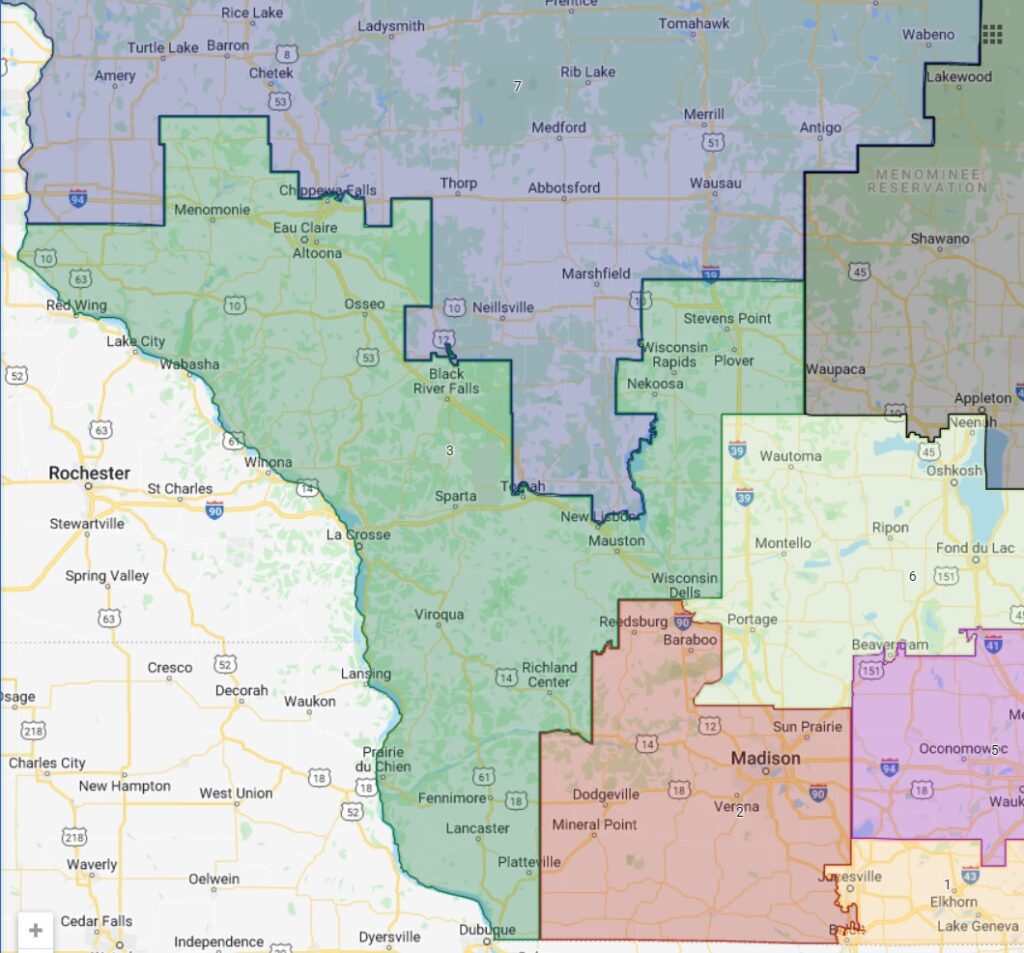Politics
A win for Democrats, but still work to do with Wisconsin’s legislative map-making process

It looks like Wisconsin finally has voting maps for the next decade — pending more lawsuits — and a decision Thursday appears to be a win for Democrats in Wisconsin — kind of.
A 4-3 vote Thursday by the Wisconsin Supreme Court to adapt Gov. Tony Evers’ redistricting maps basically floored at least one expert in Wisconsin, who studies dilemmas like gerrymandering.


VIEW THE MAPS
Old state Assembly
New state Assembly
Old state Senate
New state Senate
Old US House of Representatives
New US House of Representatives
“I didn’t see it coming,” Wisconsin Common Cause executive director Jay Heck said about an hour after the news broke. “Brian Hagedorn, who was the conservative Justice who sided with the three progressives, is certainly a maverick.
“You know, last November, he basically ruled with the conservatives that they were not going to accept any maps that were submitted to the Wisconsin Supreme Court that changed very much from the very heavily Republican gerrymandering map of 2011.”
The Wisconsin Supreme Court laid out parameters for this map-making process to accept maps that adopted the “least change” to voting districts, which means Republicans were going to still retain their majorities in the state Legislature and US House seats, regardless of the outcome.
But, Heck, who would like to see redistricting become a nonpartisan process like Iowa, had to give credit to the Evers team for their manipulation of the maps.
“The governor was very smart to do this, Gov. Evers,” Heck said. “He submitted maps that had the least deviation from the 2011 maps, but did it in a way that made them less Republican than the maps the Republicans rammed through. So, there was some strategic thinking on the part of the people that did this for Gov. Evers.”
While it appears to be a win for Democrats in the state, neither the Republican or the Democratic party chairs of La Crosse County were too happy.
“We were expecting a least-changes approach to the maps,” La Crosse County Republican Party chair Bill Feehan said. “This doesn’t look like a least-changes approach to me.”
La Crosse County Democratic Party chair William Garcia was encouraged by the decision but knew that “least-change” approach was going to hinder this process.
“The map that they want least change to was a heavily, horrendously gerrymandered map — two-thirds of Wisconsin moved to new Congressional districts in 2011,” Garcia said. “And then, from there, they’re calling (for a) least-change map for this time around.
“So, that’s why this is not like incredible news. The districts are still gerrymandered. They’re just not as gerrymandered as Republicans wanted.”
For Garcia and the Democrats, though, it’s a better outcome than what Heck anticipated.
“The general expectation by most people was that the Wisconsin Supreme Court — with a 4-3 conservative majority — was going to adopt the maps that had been passed and rammed through the Legislature by the Republican majority,” Heck said. “So, the fact that those are not the maps that the Wisconsin Supreme Court selected is pretty significant.”
Heck said the consensus among most Wisconsinites is to remove Republicans and Democrats from redistricting, instead of the process now, where the winning political party in one particular year gets to decide how the maps will look for a decade.
“It’s still unfair that you have a process where districts can still be drawn by the majority in the Legislature to their partisan advantage,” Heck said. “We need to take that out of the hands of partisans, and that includes Democrats.”
Every referendum or resolution put up by a county in Wisconsin has overwhelmingly passed in favor of a nonpartisan redistricting process — 28-for-28 on county referendums, including 11 this past November, and 56 of 56 county boards have passed resolutions in favor, as well.

Nick
March 4, 2022 at 6:49 am
You need people like myself who view both parties in an unfavorable light. In my case, I cannot stand either one.